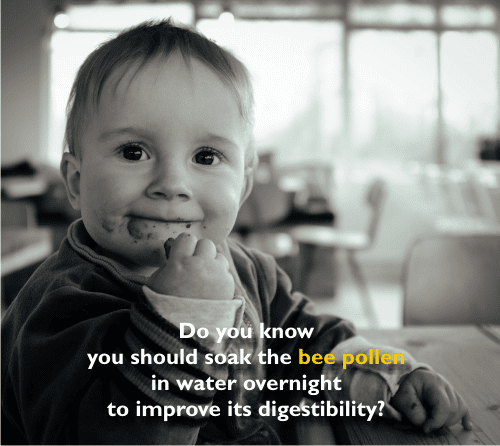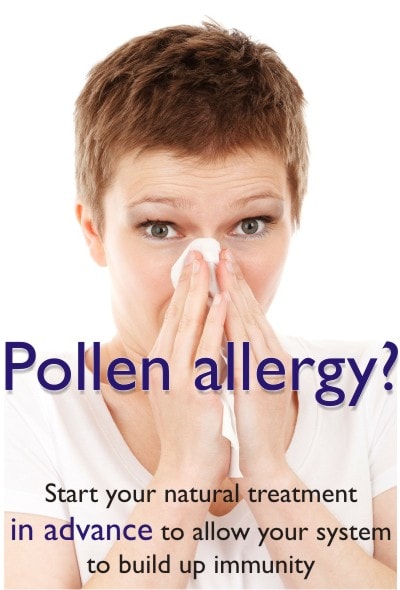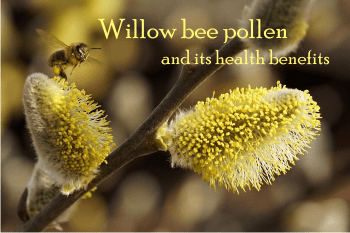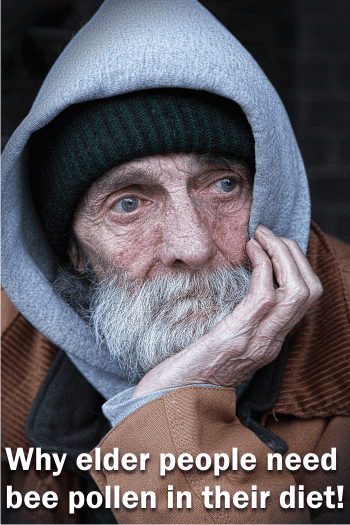What should I know before buying bee pollen?
And what should I know about how to prepare it for eating?
And how much should I put in my smoothie?
The only thing that we can do when buying it should be a sensory examination. Meaning look at it, smell it, feel it. Keep in mind that there is no standard for them, and the color, appearance, odor and taste may differ according to their botanical and geographical origin.
But there are some general features that should be recognized:
Color: mostly yellow or yellow-brown, but other different colors are possible
Appearance: as so called “pollen loads”
Odor: hay-like
Taste: sweet, sour, bitter, spicy (depending of their flavonoid content)
Yes, it is bitter and harsh. Do not expect it to taste like honey or like a desert. It’s different. Every bee pollen I’ve tasted left a bitter taste in your mouth and a feeling of flour or chalk… But you’ll like it as soon as you get used to the taste. 🙂 Then you’ll be eating too much!
! On the other hand, if you feel a taste of molds, fermented or rancid you should avoid eating it.
If you see impurities like bee parts, wax, plant particles or other strange things – again, don’t eat it.
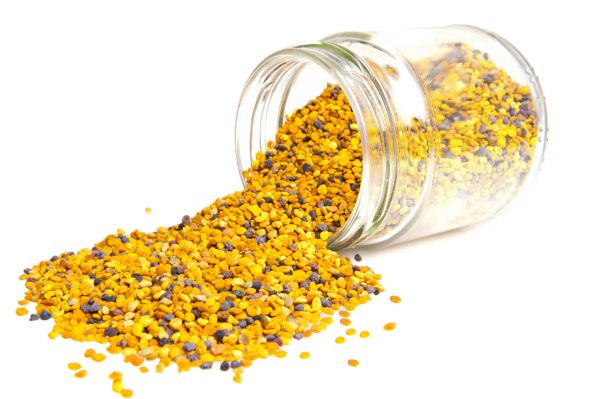
picture credit michele91 via bigstockphoto.com
The label
1. The composition.
Checking the label of the jar, or what other recipient is used, we should see the composition of bee pollen. Though there are no international standard, some countries have national countries. Here is a proposed chemical standard that Brazil, Bulgaria, Poland and Switzerland have agreed upon:
| Component | Requirement | Content |
| Water content | not more than | 8 g/100 g |
| Total protein content (N x 6.25) | not less than | 15 g/100 g |
| Sugar content (total) | not less than | 40 g/100 g |
| Fat | not less than | 1,5 g/100 g |
So it is better to check for these limits on your label, these countries have lots of experience in beekeeping and apitherapy, so all values should be at least near these ones.
Example:
100 g pollen contain on the average 20 g protein, 60 g carbohydrates, 8 g fat and approx. 300 calories.
Also the fiber content could be indicated.
If you buy dried bee pollen, water content is an important feature. Again, there is no international standard, and each country has its own limit. For example in Brazil water content should not exceed 4%, in Switzerland 6%, in Russia 8-10%, in Bulgaria 10%.
But as a rule, if it’s more than 10% the pollen is susceptible to fermentation.
If is less than 6% the pollen can be too dry and completely unpleasant.
2. Name of the producer;
3. Batch number
4. Best before.
As a general rule, dried pollen stored at room temperature: 12 months
Dried pollen packed in vacuum: 24 months
Fresh frozen pollen stored in the freezer: 12 months
5. Storage. Store in the dark in a cool dry place. Or freeze if you have a frozen product.
6. Warning. It is recommended that people who are susceptible to allergies or asthma should avoid intake of bee
pollen. Also, packages must carry the label “Not for consumption by infants under 1 year old”, as cases of “Sudden infant death” could theoretically be caused by the bacterial spores of Clostridium botulinum and to allergic proteins which can be found in bee pollen.
7. Serving. General recommendations go for Adults: 2 teaspoons daily (approx. 10 g); Children: 1 teaspoon daily. This is a standard recommendations for prophylactic use, meaning that you can add it to your daily meal for an unlimited period of time.
Types of bee pollen products
Nutrient contents of pollen change with processing and storage.
1. Fresh
As with honey or any other natural product, the quality of a product is at its highest level if it is fresh. The only way to preserve bee pollen is by immediately freezing after the daily harvest.
The freezing can be done in glass jars or recommended plastic recipients, or in vacuum (a much better way).
This product should be kept in the freezer. It can be however kept at room temperature for several hours and then refrozen, without any significant damage. So, don’t worry when you buy one and see it hasn’t come in a special recipient to maintain low temperature.
2. Dried
There are 2 ways of drying bee pollen.
– In electric ovens with a good air circulation, at a temperature of 40º C (though scientists said 30º C would be more appropriate for preserving nutrients)
– By lyophilisation, aka freeze-drying, when the pollen is frozen and then the surrounding pressure is reduced. The water from it will directly sublime from the solid phase to the gas phase.
Dried bee pollen, no matter the method of drying shall be kept at room temperature. The freeze dried one is qualitative superior and should be our choice.
Read more about the storing and its composition in the article Bee Pollen Composition
Dried bee pollen can be sold as granules or ground.
3. In honey, mixed with other bee products.
Mixing it with honey will preserve its nutritional value and shelf life. Adding other nutritional products as royal jelly, propolis, honey will only increase its health benefits.
4. As capsules
– Just bee pollen but mixed with with added other substances (usually enzymes), to increase its potency. It was proved that encapsulated powder pollen mixed with other vital enzymes like amylase and lipase has up to 95% absorption rate, which also enhances its potency.
Usually with additives.
– Bee pollen mixed with other bee products such as: royal jelly, propolis, honey. They make a synergistic combination of super whole foods easily absorbed and utilized by the body.
Recommended dose
If you are taking it for the first time, it’s better to start with only few grains and increase them the following day with some more and so on till you reach the recommended dose.
Prophylactic and for health enhancing
Adults: 10-20 g per day for 3 months, twice per year.
Children: half the adult dose
Therapeutic
Adults: 20-50 g daily, taken 3 times per day, 1-2 hours before meals.
Children: half the adult dose
Approximate weight of pollen given as spoons:
teaspoon = 6 g;
dessertspoon = 9 g;
soupspoon = 12 g
Very important:
For improving pollen digestibility place the bee pollen overnight in water or other liquid. Good chewing or milling of pollen before administering improves digestibility too.
In order to counterbalance the bitter taste of pollen, 1 part of pollen can be mixed with 1 part of honey (by weight) or can be just mixed with other food.
German Federal Board of Health has officially recognized bee pollen as a medicine.
Where can we find bee pollen?
Fresh frozen pollen
I’ve found some very good bee pollen on Amazon.co.uk. They sell 3 types of fresh frozen bee pollen: from rose, willlow and heather. Unfortunately the products are no longer available, but you might still give it a search from time to time. You never know!
Amazon.com also sells Fresh Bee Pollen Whole Granules – 16 oz. – Granules. But they are not frozen. And not organic. They do not specify how was the pollen dried, if at all. This is also a minus, as the water content is not written on the label.
If the pollen was not dried then this fresh pollen should last only for 6 days in the refrigerator! So, I don’t know what to say about it.
If you have doubts like I do and you cannot find a frozen bee pollen, then go for the dried one. There is a loss of quality, but it still is worth the trouble.
Dried bee pollen as granules or ground.

· Gfm Organic Pollen Granules 110 g and
· Certified Organic Bee Pollen 200g – Hungry Hedgehog Superfoods or · Sevenhills Wholefoods Organic Raw Bee Pollen 500g
.
– as powder Stakich BEE POLLEN POWDER 1 lb (16 oz) – 100% Pure, Natural, Top Quality
In honey, mixed with other bee products.
Fresh Royal Jelly + Bee Pollen, Propolis, Ginseng, Honey Mix – 36,000mg Y.S. Org 20.3 oz
As capsules, mixed with other bee products. Usually with additives.
Bee Pollen Supplement with Royal Jelly & Propolis – 120 Vegetarian Capsules or YS Organic Triple Bee Complex Royal Jelly Bee Pollen Propolis — 90 Capsules
Bee pollen or Bee bread?
Definitely bee bread!
Do not confuse them. If you can afford it, as it is more expensive, choose bee bread (or beebread). Bee bread is bee pollen stored by the bees in the hive, with added honey and bee secretions. Bee bread undergoes a lactic acid fermentation and can be thus preserved. Read here about this bee product. What is the difference between beebread, aka bee bread, and bee pollen?
Here is a good source:100% Natural Bee Bread (Ambrosia / Perga) Highest Medicinal Quality from the pristine Altai region of Siberia (250 grams) by Na’vi Organics, available on Amazon.
Is bee pollen organic?
Some is, some is not.
As a bee product, pollen is the one least influenced by contaminants of the hive or other beekeeping process. The bad news is that it can be contaminated by air contaminants, by heavy metals and especially by pesticides. If you buy it from your locals ask them where they have placed the hives. With the exception of pollen from Australia, which is a country not using pesticides.
In the last few years there are genetically manipulated plants and also pollen. No studies on the negative effect of such pollen on human nutrition have been published. The consumer should be aware of that. In the EU there is a compulsory indication of the content of genetically manipulated organisms (GMO) in food (and also of pollen, if there the GMO content exceeds 1%).
If you buy blackberry bee pollen there are chances the hive were near a crop which was treated with pesticide. Or, the bee pollen can come from an area of wild blackberry which was far enough from pesticide or heavy traffic. If this is the case, the producer has a rather small quantity of pollen and he will surely write “organic” on the label. And raise the price a little.
As a rule, for optimum quality pollen should be gathered in areas which are at least 3 km distant from contamination sources such as heavy traffic and pesticide-treated agricultural areas. So ask your locals about this. Or make sure you understand this from the label.
Bee pollen is not like honey. You can buy it from supermarkets as well, there is not extra-processing done on it. Of course the microbiological safety is the main quality criterion followed. But the destruction of bacteria by irradiation, ozone treatments or chemical fumigants is not necessary and leads to toxic residues. I’m sure there are some producers that do this, in order to prolong its shelf life, but not the majority.
Side effects and allergic reactions
It is recommended that people who are susceptible to allergies or asthma, or people with hay fever should avoid intake of bee pollen.
Nevertheless, pollen allergy like hay-fever, concerns mainly allergy against air-born pollen, while allergies to ingested pollen are relatively rare, with a similar rate as other foods. According to a 2008 Russian study the incidence to pollen ingestion, tested in 891 normal humans was 1.45%. (SMIRNOVA, V, 2008)
It is considered that about 10 to 25 % of the population has hay fever or other forms of airborne pollen allergy. And mostly the allergy reaction is due to wind pollinated pollen. Yet in 2015 CHOI, J H and his team discovered that there are bee pollen from the Compositae family which can also induce an allergy.
In fact there was a reported case: a 34-year-old Spanish woman with a lifelong history of seasonal rhinoconjunctivitis and honey intolerance which developed eosinophilic gastroenteritis after ingestion of bee pollen. There was also one case of renal failure and one case of anaphylactic shock after bee pollen intake.
However, bee pollen has an anti-allergenic effect and there is a successful desensitisation therapy to hay fever by pollen. Claims that a small consumption of bee pollen can desensitise against hay fever are known since a long time. And recently it was proven that bee pollen indeed exerts antiallergic and anti-hay fever effects. (ISHIKAWA, Y et al., 2008)
Taken with pain killers (NSAID), bee pollen can reduce the efficiency of the drugs. (according to a study reported on naturaldatabase.com)
Toxic compounds and microbiological contaminants
Pyrrolizidine alkaloids (PA) are hepatotoxic substances found in some plants, such as Echium vulgare (Viper’s Bugloss), E. plantagineum (Patterson’s curse), Senecio jacobaea, S. ovatus, and Eupatorium cannabinum.
Here are more details about the toxic pyrrolizidine alkaloids possibly present
in our raw honey: Our raw honey can poison us!
In Middle and Northern Europe these pollens are not among the main pollen gathered by bees, however in Southern Europe the two Echium plants are more diffused and are gathered by bees in larger amounts.
Pollen should be tested to fulfill with standards for microbiological purity and residues of contaminants.
Bee pollen in your meals.
Ground pollen can be mixed with honey, cottage cheese or yogurt. Granules can be blended to create ground pollen, which can be added to smoothies or sprinkled over salad. It’s better to soak it over night. I am sure you can find a perfect way for you.
Here is a great recipe for a smoothie: banana, avocado, almond milk, spinach and bee pollen!
Give bee pollen to your elder ones! See here why.
=============
=============
References:
Bee Product Science, www.bee-hexagon.net, April 2016
Feature picture with happy child eating – source pixabay.com, under CC

